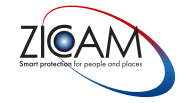Identifying Fire Risks in the Workplace
Fire risks in the workplace can lead to serious injury or death, and employers need to take steps to identify and eliminate them. It is important to establish a fire safety plan for any workplace, following relevant codes or standards as well as general best practices. This should be done at the earliest stages of setting up a business, and kept updated over time.
In this article, we will be going over the five steps for identifying and dealing with fire risks in your workplace.
Step 1 – Assessing the Layout
To identify potential fire hazards in the workplace, employers should start by carrying out an initial fire risk assessment. This will help to bring existing problems to light that could otherwise go unnoticed.
The first step is to assess the layout of the premises and look for any combustible materials or furniture that may pose a risk. Areas that need particular attention are materials storage areas, electrical systems, gas operated equipment and confined spaces with limited ventilation.
Fire safety considerations must also be given when selecting furnishings, such as avoiding using highly flammable materials. Make sure all electrical equipment is in good condition and avoid using extension cords where possible as they can easily overheat.
If you have any flammable liquids or gases stored onsite, be sure to keep them in clearly labelled containers and place them away from ignition sources such as open flames or heaters. Additionally, check that exits are clearly marked and accessible at all times so employees can evacuate quickly in the event of a fire.
Step 2 – Assess the Fire Risk Levels
Once potential hazards have been identified, it is then necessary to assess their risk level. This involves analysing the likelihood of a certain hazard leading to a fire and the consequences should this happen.
When assessing the risk levels of fire risks, it is important to consider all potential factors that could contribute to a fire starting or spreading. These factors include the presence and type of combustible materials in an area, as well as environmental conditions that may increase the likelihood of ignition. For example, an area where flammable liquids are stored will have a higher risk than an office space with no combustible materials.
The best way to assess the risk levels of a particular location is through a professional fire risk assessment conducted by a fire safety expert or an experienced fire investigator. During the fire risk assessment, the assessor will consider all of the aforementioned factors and other relevant information in order to determine the probability of a fire occurring at that site.
Once the risk assessment has been completed, it is important to implement measures to reduce or eliminate any identified risks.
Step 3 – Develop a Fire Safety Plan
To reduce the risk of a fire occurring, it is necessary to develop a fire safety plan. This should include details such as how to respond in the event of a fire and who has responsibility for carrying out certain tasks, as well as establishing processes for alerting authorities if necessary.
Additionally, this plan should provide information on how to identify potential fires before they occur and what steps can be taken to prevent them starting. It is important that all staff are made aware of the plan and are trained in its implementation.
A comprehensive emergency response plan helps ensure everyone knows their role in case of an emergency, so there is no confusion or delay when it comes to ensuring the safety of your facility and personnel.
Step 4 – Install Appropriate Fire Prevention Equipment
In addition to the initial fire risk assessment, regular inspections should be carried out to identify any new risks or areas that need improvement. This could include the testing of smoke alarms and fire extinguishers, as well as making sure all fire exits are clearly marked and unobstructed at all times.
Employees must also be aware of their responsibilities in case of a fire – they should know where to go and how to evacuate safely, as well as using appropriate fire safety equipment such as extinguishers correctly if needed.
If your business requires life safety systems, please get in touch with Zicam Security. We’re here to help your business with security, life safety, and more. Discuss your requirements with our experts today.
Step 5 – Monitoring & Training
It is essential to monitor the fire risk on a regular basis. This should involve assessing any changes which have occurred since the previous assessment as well as carrying out periodic checks to ensure that all fire prevention equipment is still functioning correctly. By monitoring the risk, it ensures that any potential risks are identified before they become a problem and steps can be taken to reduce them.
Employers should also provide employees with adequate training on identifying potential fire hazards and avoiding risky behaviour that could lead to an outbreak of flames. This can be done through video tutorials, seminars or online courses. By raising awareness of the risks, employers can help to prevent future fires and keep their workers safe.
Contact Us
Here at Zicam Systems Group, we are dedicated to supporting all of our customers to stay safe when it comes to their businesses. If you are looking for fire safety systems, do not hesitate to contact us via our contact form or by phone at 08000854711.

